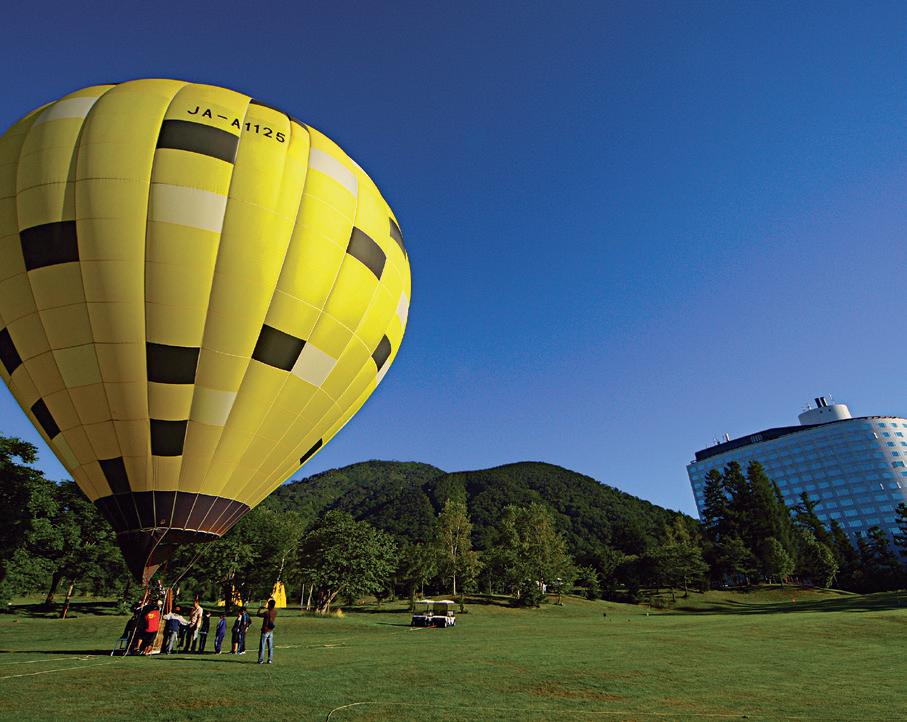
2 minute read
summer’s bounty
from YTL Life Fall 2022
by IMV Malaysia
a typical niseko village culinary summer is informed by the concept of shun, the celebration of seasonal produce at its peak.
Words by ALIZA KASSIM
This page: savouring tender Wagyu.
Facing page: Lake Shikotsu was formed by a major eruption that led to the collapse of the mouth of the volcano.
This and facing pages: summer in Niseko is all about relaxing while enjoying the great weather and a calming outdoor lifestyle with activities such as fruitpicking and hot-air balloon rides.
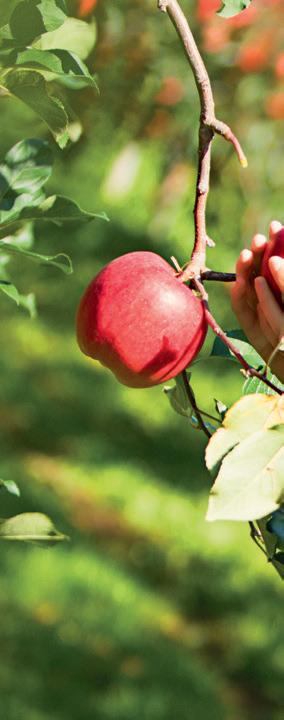
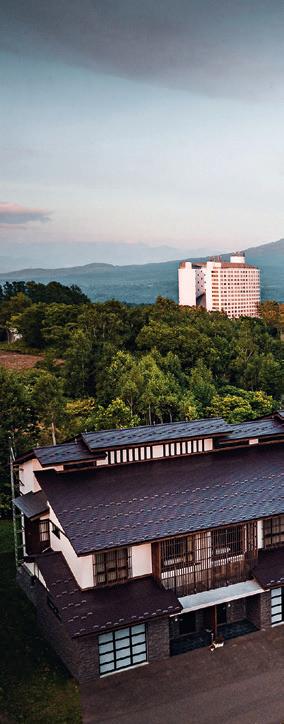
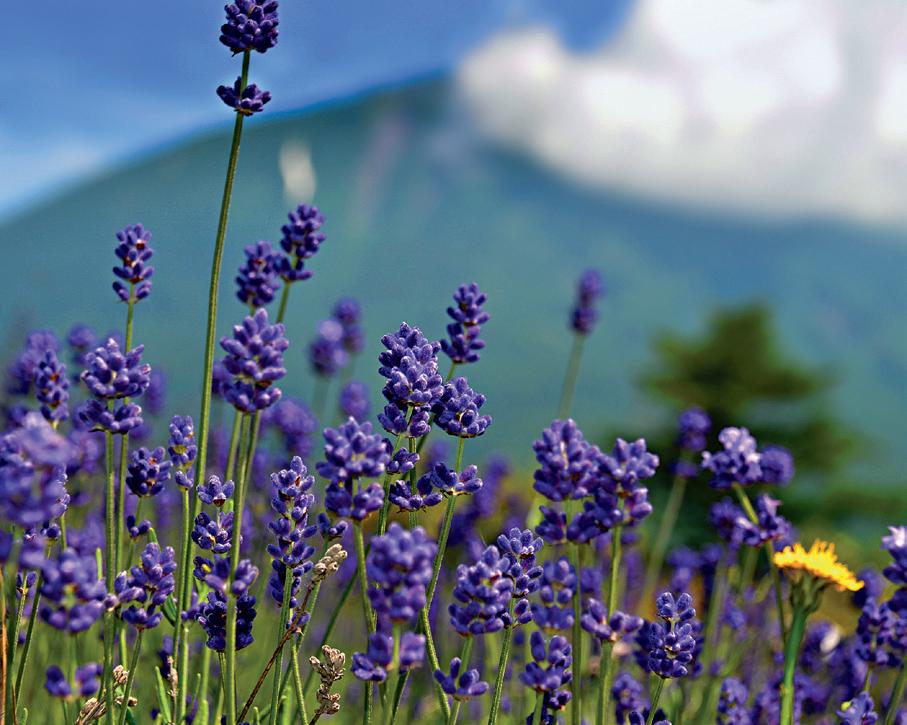
Niseko’s reputation as a winter wonderland is equalled by its enchanting summers. In its warmer months, the surrounding countryside dramatically changes from pristine white to stunning green forests. At Niseko Village, which comprises Hilton Niseko Village, Green Leaf, Kasara townhouses and Higashiyama Niseko Village, a Ritz-Carlton Reserve, Mount Yotei sits resplendently in the background, foregrounded by pastoral landscapes and bright yellow sunflower fields, a mirror of the colourful crop of Hokkaido’s freshest produce.
“Summer turns Niseko into one large greenhouse,” says Niseko Village’s resort director Panch Ratnavale. Indeed, it is the perfect season to experience the age-old ethos of Shun – that food should be savoured in its proper season and at the peak of its perfection. The area is made bountiful by a 40,000-year-old explosion of a trinity of volcanoes resulting in Lake Shikotsu, the eighth largest lake in Japan, and rich, fertile soil. The lake’s famed red salmon, known locally as chippu, is a popular feature at the dinner table and guests are able to witness its conservation in the form of the traditional salmon wheel to help the fish swim upstream to spawn. The lake’s crystal waters are also perfect to observe other marine life from the comfort of rowing boats.
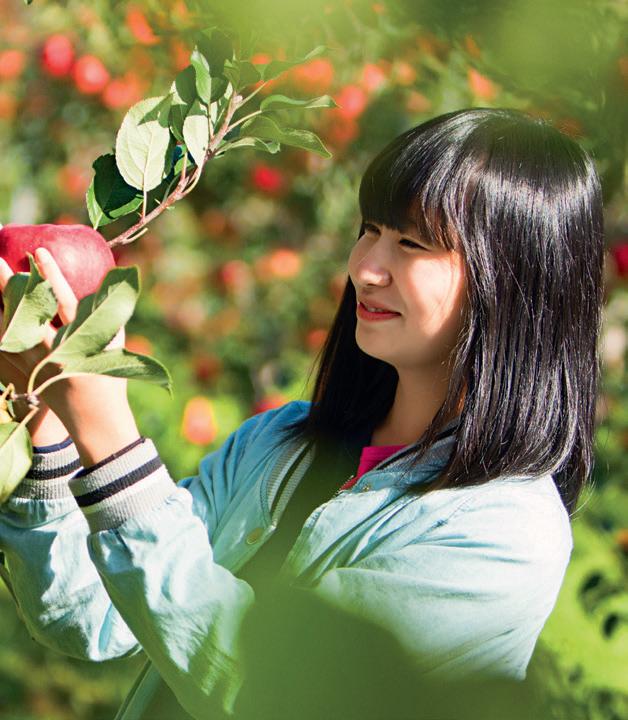
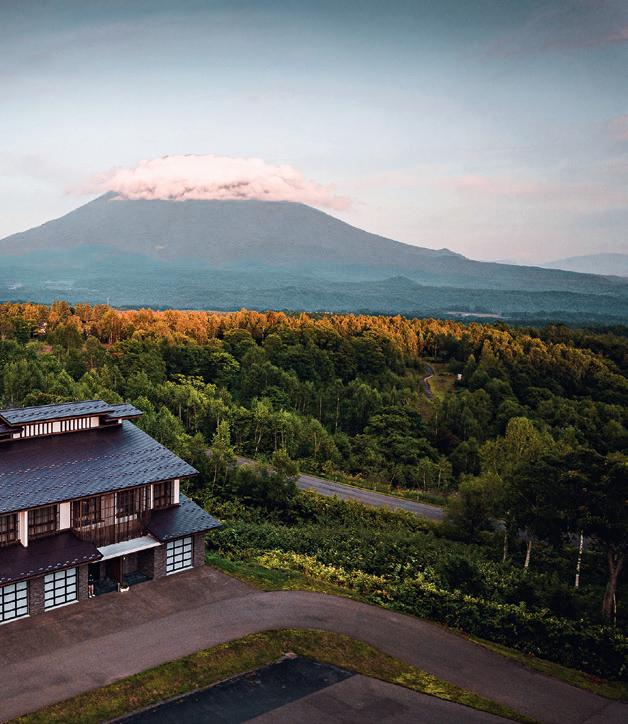
The culinary journey starts by the lake where food stalls offer plump grilled scallops, corn-on-the-cob dripping in butter, Yubari melon ice cream, glazed mochi and Hokkaido’s renowned milk. Yet, nowhere is Shun more present than at Niseko Village, where the freshest ocean delicacies and finest fruit and vegetable harvests are highlighted through exciting culinary savoir faire
Visitors at Sisam and Goshiki, for example, will be especially taken by the creamy umami-rich unagi (sea urchin), Japanese flying squid and juicy surf clams, their flavours coaxed and heightened by the chefs. Ikura from the eastern sea coast of Hokkaido and grilled herring are present at the themed buffets at Yotei (named for the mountain that it faces) and casual dining at Yang Shu Ten. At The Crab Shack, Kaizen Nabe, a pot of sheer seafood deliciousness in kombu dashi (kelp stock) is a firm local favourite.
Live squid sashimi perhaps presents the purest form of Shun with an unsurpassed flavour profile, while crab remains a coveted seafood. The sweet flesh of the native Hanasaki (or blooming flower) crabs are best sampled grilled or in teppou soup. There are also the clean, sea flavours of snow crab sashimi, horsehair crab miso and blue king crab tempura to be had.
On the table at some restaurants is the exceptionally marbled, melt-in-the-mouth Hokkaido Tokachi Wagyu. The perfect accompaniments to the meat, of course, are crunchy asparagus, new potatoes and sweet yellow pumpkin. Hokkaido’s famous local Japanese soup curry is available at Two Sticks, which also serves a novel Tandoori chicken soup curry with local potatoes, eggplant, peppers, pumpkin, mizuna leaf and egg.










